Avec l'aimable authorisation de Martine Batchelor*, nous publions ici une partie de son article (en anglais) sur la voie du thé coréenne.
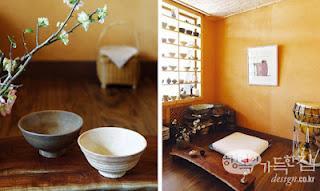 Visiting Songgwangsa, an important Son (선 - Zen) monastery in Chollanamdo in South Korea, if you take a walk up a steep hill and deep in the forest you reach Bulilam, an hermitage nestled in a bamboo grove with a wide vista of Chogye mountain. There, resides Popjong Sunim, a writer and a leading monk of his generation.
Visiting Songgwangsa, an important Son (선 - Zen) monastery in Chollanamdo in South Korea, if you take a walk up a steep hill and deep in the forest you reach Bulilam, an hermitage nestled in a bamboo grove with a wide vista of Chogye mountain. There, resides Popjong Sunim, a writer and a leading monk of his generation. 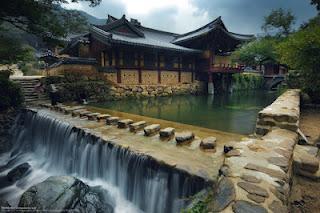
Le temple Songgwang-Sa
One of the joys of visiting him is to be offered a cup of tea. He does it in a very traditional way:"In preparing green tea one should first bring the water to the boil. Then one should pour it into a largish bowl and let it cool to about 60 degrees celsius. If the water is too hot, then too much of the tea’s bitterness will be extracted into the water. At this lower temperature the fragrance of the tea is extracted more slowly.
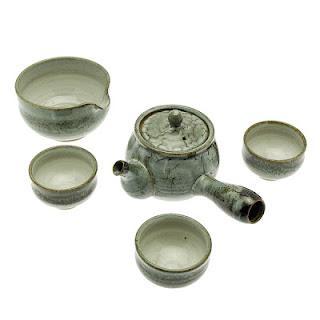
Service à thé traditionnel (à 3 personnes) : 'Forêt d'hiver'
The teapot and cups should be warmed with some of the water. After warming the tea leaves into the teapot, pour in the water and let the leaves infuse for two or three minutes. It is important when pouring the tea to make sure that the taste is evenly distributed in all cups. Therefore, never fill each cup in a single pouring, but fill them little by little - up to three servings each. While drinking the tea, refill the teapot with water.

Do not gulp the tea but sip it slowly allowing its fragrance to fill your mouth. There is no need to have any special attitude while drinking except one of thankfulness. The nature of the tea itself is that of no-mind. It does not discriminate and make differences. It is just as it is. There are four inherent attributes to tea: peacefulness, respectfulness, purity and quietness. In drinking tea these qualities should be cultivated in the drinker. Drinking tea gladdens the mind. The taste of the tea is the taste of the entire universe because it is produced entirely through natural sunlight, water, wind, clouds and air."

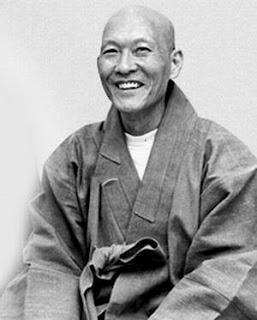
Le moine Popjong
Because of the need to make utensils for tea, pottery was highly developed during this period. At the end of the Koryo era the drinking of tea decline in popularity because the ceremonial aspect had become too elaborate and ritualized. During the Confucian Yi(ou LEE) dynasty (1392 ~ 1905) wine (vin de riz) replaced tea as a formal drink. However, even in this period the court demanded a tea tax from the Buddhist monasteries. Although Buddhism was suppressed at this time, the tea drinking which had come to be associated with it still prevailed and influenced life at the court. During the Silla Dynasty (-57 ~ 935) tea was often used as a medicine.
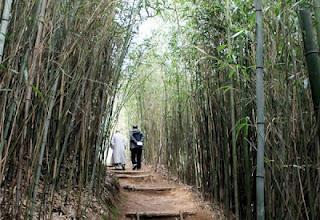
Le chemin vers Bulilam où vivait le moine Popjong
First the leaves would be steamed and then pounded into the shape of a coin. This compressed form would be boiled for a long time in a medicine pot before being drunk. In Koryo, powered tea was drunk in a large bowl. During the Yi period the drinking of simple green leaf was introduced. In this way one can observe a progression from complexity to simplicity in the preparation and the drinking of tea. Nowadays in Japan they use tea-bags. As life becomes busier, the complex forms of tea drinking are dispensed with in favor of quick and simple methods.
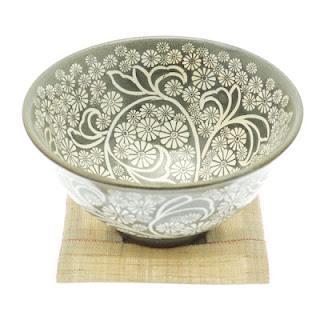
Chasabal ou Dawan - Bol Chrysanthème
The style of pottery in Korea also changed according to the ways in which tea was prepared and drunk. Thus, both in China and Korea, tea was first developed as a medicine and only later adopted for the pleasure of drinking it. After the Yi period when Buddhism started to revive, an interest in drinking tea also revived. Nowadays it is growing in popularity in Korea. Tea plants grow wild near most monasteries. In addition they are now being cultivated commercially. "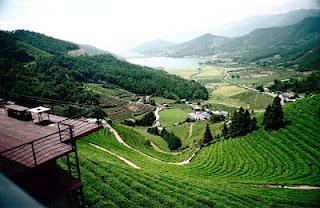
Champs de thé dans le sud de la Corée
In Songwangsa, one can find a hill surrounded by bamboo groves glistening with the leaves of the tea plants, Popjong Sunim introduces us to the making of the tea: "In spring we gather the tea leaves and then roast them by rolling them in a hot iron plate. This gives the tea in Korea a slightly burnt flavour. Such a flavour is very much liked by Koreans; it is also discernable in our rice water and barley tea. In Japan the people like the taste of seaweed. So often their tea has a similar taste to seaweed. The Chinese enjoy heavy, oily food. Thus they also tend to like their tea to have a strong flavour. In this way you can see how the different tastes of people determine the flavour of their teas.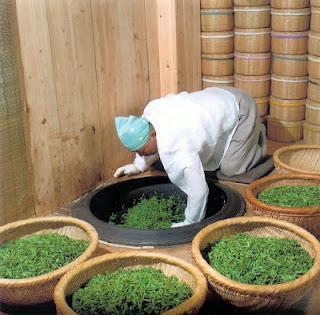
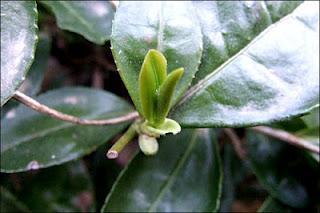
Jeunes pousses de thé : Chakseol - Langues de moineaux
To determine whether the tea is a good one or not, one should examine its color, scent and taste. The perfect color is like that of the first leaves in spring. The taste should resemble that of the skin of a young baby. The taste cannot be described but only appreciated through experience. Tea is drunk either to quench the thirst, savour the taste or simply to spend a quiet hour appreciating the pottery and the general atmosphere that accompanies tea drinking."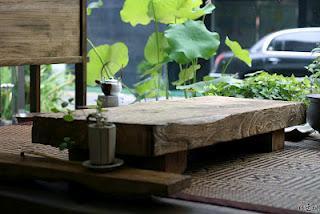
"The first mention of tea in Korean texts is found in a record which speaks of a small kingdom called Garak, which existed before the time of the three kingdoms of Koguryo, Paekche and Silla. It is claims that the first king of this country married an Indian princess who brought buddhist scriptures, images and tea with her from India (lien vers la légende). However, this account is usually discounted as legendary. At the time of Unified Silla, an envoy called Kim Taeryom was sent to Tang China. He returned with tea seeds which he then planted in the south of the country on Mount Jiri, near Sanggyesa monastery.
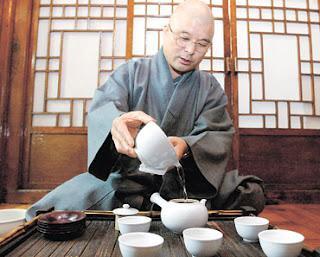
Le moine Sunhae
An eighth century Chinese record written by an ‘immortal of tea’ mentions the use of tea in Korea. The author claimed that although the best tea was found in his home province in China, the next best was grown in Silla and Paekche and the third best in Koguryo. There is a record in a Japnese temple which states that the first tea seeds were brought to Japan by a Buddhist monk from Paekche… (à suivre sur le site d'origine : lien)* Martine Batchelor est née en France en 1953. Elle devint une nonne Bouddhiste en Corée en 1975. Elle a étudié et pratiqué le Bouddhisme Zen sous la direction de maître Kusan dumonastère de Songgwang Sajusqu’en 1985. ** Retrouver nos thé Jukro 'Larmes de bambou' sur la boutique Coreacolor (lien)

